by Wallace Wyss
This is a story about a barn finder who had an unbelievable stroke of luck. And how happenstance can make fortune come your way.
First of all the car, the 1966 Ford GT Mk II. To sum it up quickly, Henry Ford II–after being spurned in his attempts to buy out Ferrari around 1963—authorized his engineers to build a Ford endurance racer, with the goal of winning the 24 Hours of LeMans.
The first version, in ’64, was powered by a 260 cu. in. V8 from their Indy car, but that engine proved no good in an endurance racer. In ’64 they switched to a wet sump 289 out of a racing Cobra and got some reliability, but still not enough endurance to win LeMans. In ’65, they go to the bright idea of jamming in a 427 big block (same as used in the Cobra) but still didn’t have reliability.
It all came together in ’66 when they were able to field several 427 powered Mk. II Ford GTs and not only dominated the race, but came across the finish line 1-2-3.
Enzo Ferrari had to eat crow and just to rub it in, 50 years later, a Ferrari still hasn’t finished first overall at LeMans.
There was a lot of lamenting over the years over how the team of Ken Miles and Denny Hulme, piloting the Ford GT40 Mk II numbered P/1015 should have won.
True, their almost certain victory was pulled out from under them by some Ford official who wanted them to slow up so all three of the Ford GTs near the lead could cross the finish line together. Better for the news pictures, y’understand.
But somehow those dastardly Kiwis, Bruce McLaren and Chris Amon, in a following GT40 Mk II (chassis P/1046) were awarded the win though the picture shows them neck and neck.
Ken Miles was heartbroken. From Ford management standpoint, it was not much of a concern, after all, Ford won!
Some also grouse that Ford “stacked the deck” by entering not less than eight Mk IIs in the 1966 race, splitting them among three teams– three for Shelby American, three for Holman Moody and two from UK development partner Alan Mann Racing. There were also five private teams running the “old” small block Mk.I GT40s, so Fords made up nearly 24-percent of the total entries.
By contrast, Ferrari, their arch enemy sent only two works-prepared 330 P3s to the race, but by lap 227 only two Ferraris were still in the running, and they were 275 GTB models that couldn’t catch the prototypes.
The decision by race officials on who was the winner was based on where the winning car started—eight meters further back on the grid, so since the two crossed the finish line at the same time, the Kiwi-piloted car was ruled having traveled the furthest and thus was ruled the winner.
THE PUBLICITY BLITZ
Now Ford wanted to get publicity so they painted several Mk. II cars black to match P/1046 and sent them around for display at dealers. The actual winner, was not allowed to rest, though, it was shipped back to Shelby-American and modified for a round of transmission development testing. Its next race was by the Holman-Moody team, which unfortunately had it crashed at Daytona in 1967 by Texan Lloyd Ruby.
It was repaired and a shirt company, Hathaway, tied in with the car for promotion and it toured the country.
The car was then taken apart, the chassis sold, according to Hemmings, to David Brown and then a later owner, Ed Zamarelli, took it back to Holman-Moody to make it a road car, complete with a gold metalflake paint job that would have done George Barris proud.
A sacrilege, right? Right. So fortunately in 1973, the next owner took it back to Holman-Moody to return it to racing spec.
THE HAPPENSTANCE
So, several owners later, we flash forward to Blue Mounds Wisconsin in the early ‘80’s. George Stauffer is a cheese man indulging in his hobby business, selling interesting cars, having started with Rolls Royces. A stranger wandered in and asked if he was still buying Rolls Royces. George said well, that used to be the case, but now he liked Cobras. The guy looked at the Cobra out front and said something to the effect of: “Well, then, if you like Cobras do you also like GT40s?”
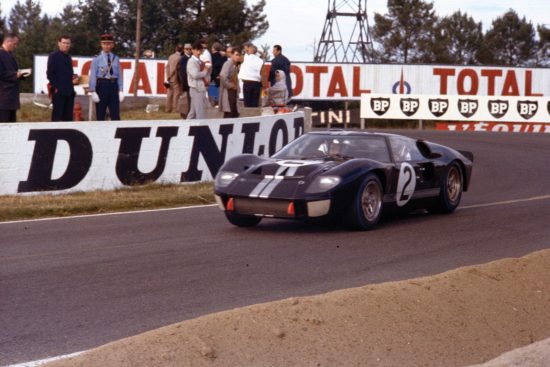
Designed to beat Ferrari at the 1966 24 Hours of Le Mans race the design of the GT40 MkII included a new quick-change technique allowing disc brakes to be changed in a mere five minutes. The GT40 MkII captured first, second and third place that year.
How fast could Stauffer say “Yes?” Turns out the guy had three GT40s, and a Rolls Royce for sale. Only trouble was they were all in storage over in Paris. Not Paris, Texas but Paris France. Now George was not your average countrified used car dealer, the kind with a broad brimmed straw hat, chewing on a stick of cornsilk.
He had friends. Among them was a Scot, Ronnie Spain, who wrote books about GT40s. Stauffer bought a ticket to France and then called Spain in Scotland and paid to have him fly to Paris and the two buyers and seller went to the warehouse where the cars were. When the seller opened the door and George saw the Mk. II, he thought it was one of the ones painted to look like the LeMans winner and then, after Spain checked the SN and other clues to its identity found out it was the actual LeMans winner.
Another problem, though—George had to buy all the cars to get the one he really wanted–the LeMans winner. But he was able to sell the other cars and not lose money.
George took to vintage racing the car, but finally sold it in late 2014, when the car was sold to RK Motors founder Rob Kauffman. Kauffman knew there would be a lot of celebrations of Ford’s 50th anniversary of their first win at Le Mans, and that his car would be sure to be invited to these occasions. He took it to New Hampshire’s Rare Drive, Inc. firm which did a full restoration on the car.
The goal was to display it at the 2016 Pebble Beach Concourse d’Elegance.
Lesson learned? When a customer wanders into your car showroom and wants to sell a car, then don’t send him packing just because you don’t need what’s offered. Ask him what else he’s got in his garage….you might be pleasantly surprised…
Let us know what you think in the Comments.
THE AUTHOR: Wallace Wyss tells almost all his secrets in his series of books entitled Incredible Barn Finds available directly from the publisher at (715) 381 9755
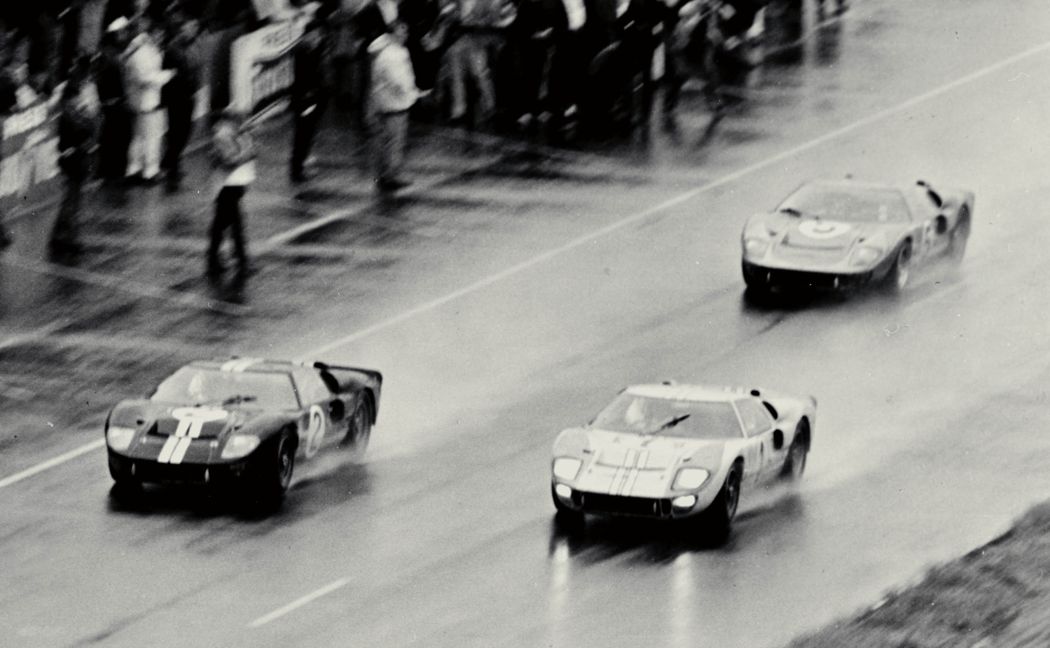
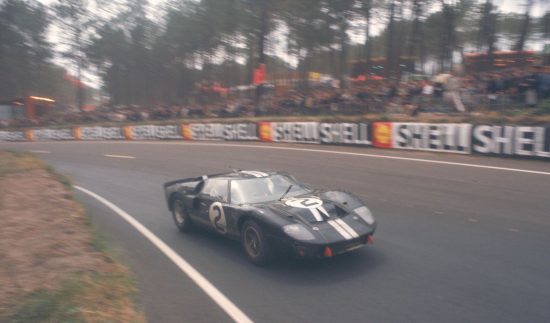
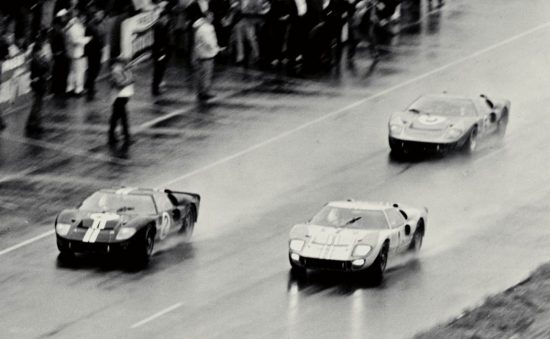
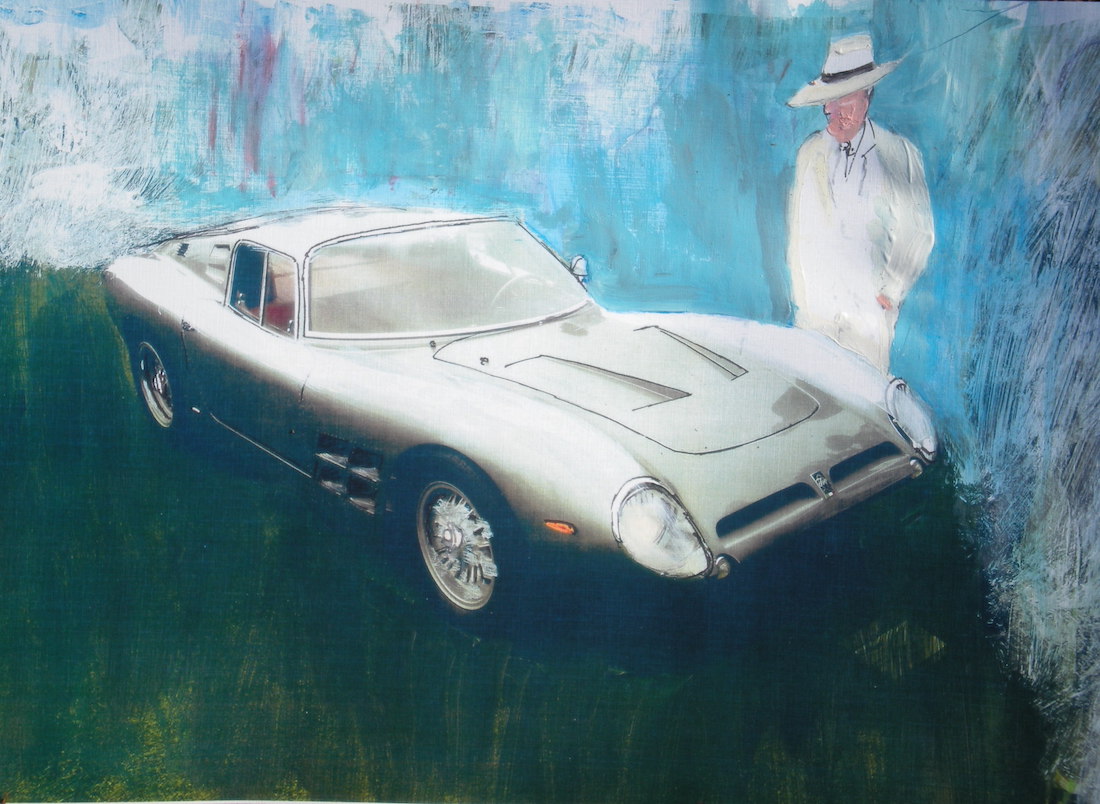

I thought the cars were found in Ghent ,Belgium, not in Paris, or am I wrong?
I thought he said Paris, but I’m sticking to my story on how it was found. I spoke with George several times.
Wallace,
Thanks for sharing this story! I’ve been a big fan of the GT40, and enjoyed looking at the photos you included with this story. I’m interested to find a high-resolution photo of one of the GT40’s that would be suitable for printing as a poster. Do you have any suggestions regarding a photo where I could purchase a digital copy?
Ray
Ford made some available on a website awhile back, but I don’t have the URL. I would contact a GT40 club in England. They might have a source. I don’t archive my own pictures anymore, now that I am wearing a painter’s hat (beret?)
Cars were in Belgium. The story for historical purposes , all fairness to George Stauffer and his associates needs to be told actuality or what is the real purpose Wally?
The story is nice and entertaining…………Wally we all love you but here is the correct version
George Stauffer stumbled across the 4 cars thru a news paper ad inquiring about an old Rolls Royce. He never went to Belgium to view vehicles he sent Ronny Spain and one of George’s employees (Jeff Sime) to view 4 vehicles.
The 4 vehicles were
CSX 3334, GT40P J-4 , GT40P 1046 and GT40P 1074 which we traded off 1074 a few days later (Adrian Hamilton) for a D Type Jaguar (518). Which were all restored back in Wisconsin at Stauffer Classic’s
How do I know this? I was there and assisted in real story.
Cory Gehling general manager- Stauffers Classics
many photos to support the story……….Best of Luck to R.Kauffman at PB
Being a gt40 fan myself, I am more intrigued by the owner of the cars.
After all he was able to reunite p1046, the car that won Le Mans.J4, the Sebring winner, and p1074, one of the Original gulf team cars!
Who was this guy? Was he able to buy them together?
How comes that Ford didn’t realize the importance of these cars after spending so much money on them?
Let’s hope Mr. Gehling will enlighten us on that, he was on the scene when they were repatriated to the US. But as a historian, I found several cases where, once an automaker decided to stop racing a particular car, they would unceremoniously dump the leftovers, such s ford burying the GT40 7-liter roadster that won Sebring. By destroying it, they saved that import duty! (and now can’t show it like Mercedes does their old race cars) Usually the buyer of these race cars is some supplier to the factory or employee who knows when they are about to be dumped. All I can say is that man had a good eye for what would be valuable in the future and it’s too bad he couldn’t keep them.